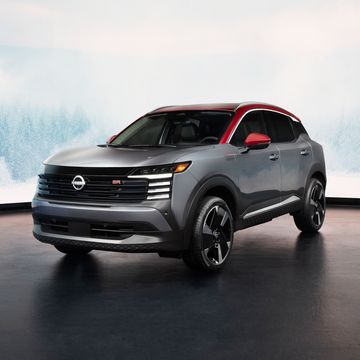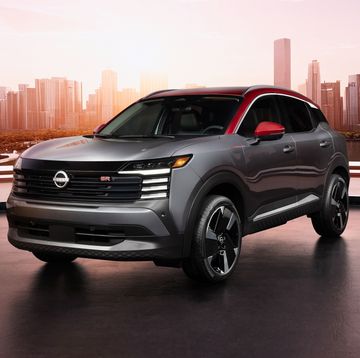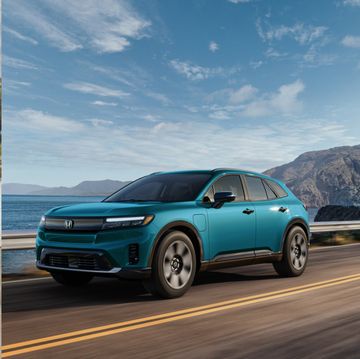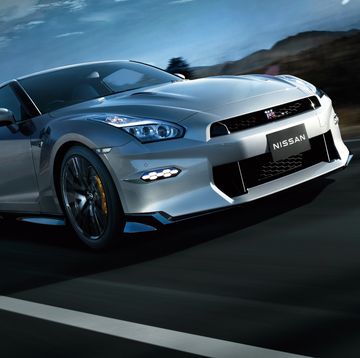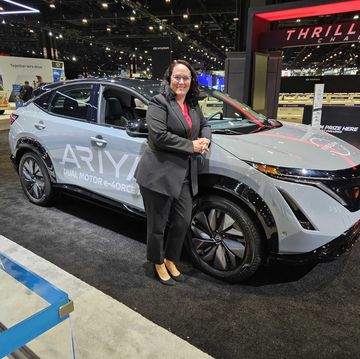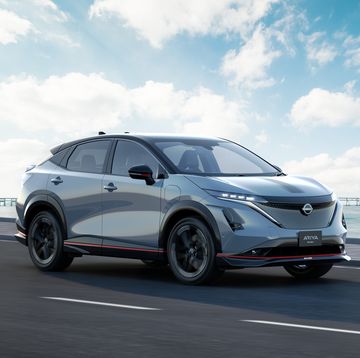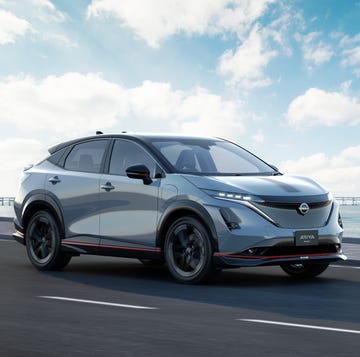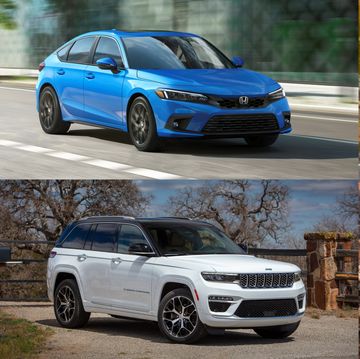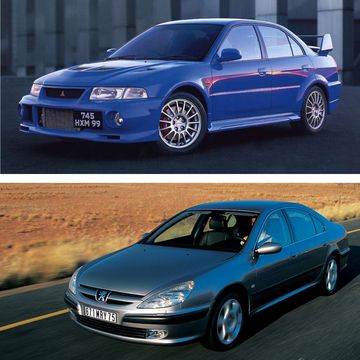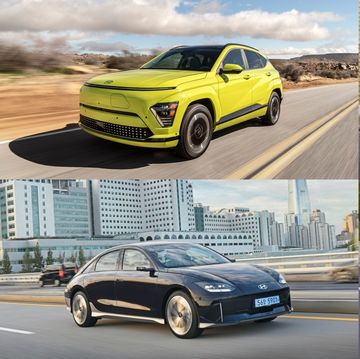As any suburban parking lot will show, American drivers are addicted to their utility vehicles. Nissan has done well for itself, winning in the compact SUV segment with the Rogue, which recently became the top-selling nonpickup in America. The Rogue also won a sibling rivalry against the Altima by becoming the automaker’s top-selling model, accounting for roughly 1.6 million sales since its inception in 2007. Nissan understandably wants to keep the party going by diving into another hot segment -- the even smaller and more cutthroat compact crossover.
The new Rogue Sport, known as the Qashqai in Europe and Canada, borrows more than just its name from the larger model, which is presumably to save American drivers from having to answer the unavoidable question of what a “Qashqai” is (it's a nomadic tribe that inhabits a mountainous region in Southwestern Iran). Saying “Rogue Sport” is easier.
The styling is very similar to its larger sibling, both inside and out; even things beneath the body, like safety features, the continuously variable automatic transmission (CVT) and suspension design carry over as well. The Rogue’s trim levels are also similar, for the most part, with the Rogue Sport being offered in three guises -- S, SV and SL -- with front- and all-wheel-drive variants for each trim.
Regardless of trim, the Rogue Sport has a 2.0-liter inline-four under the hood that’s good for 141 hp and 147 lb-ft of torque. As with the majority of other Nissans, the engine is connected to a CVT that’s been tuned for a "sportier" feel. Nissan has priced the Rogue Sport competitively in the segment, starting at $22,380 (including $960 destination fee) and going all the way up to $28,380, slotting it perfectly in between the Juke and Rogue.
The Sport’s size also reinforces its position. It’s essentially a smaller version of the Rogue -- and it’s noticeably different in size, both inside and out. The Rogue Sport is strictly a two-row, five-seater, and is approximately 12 inches smaller in length, 5 inches shorter and riding on a wheelbase that’s 2.3 inches smaller than the Rogue’s.
The Execution
Despite “Sport” in the name, don't assume Nissan dialed much of an athletic personality into its latest crossover. U.S.-bound Rogue Sports get a revised steering system and different suspension components from the global Qashqai, and those changes are aimed toward driver comfort, not canyon carving.
Darting through traffic in Nashville, Tennessee, is straightforward thanks to the Rogue Sport’s petite size. The large windscreen gives a clear view of where the car’s nose is at all times, and drivers who have trouble with parallel parking will find the Around View Monitor a blessing.
The interior is similar to that of the standard Rogue, with comfortable seats, and the six-speaker audio system will play anything you want from a multitude of inputs. Despite having less interior space than its larger comrade, there's an ample amount of room for a 5-foot-10-inch driver. The sloping roofline cuts cargo space by roughly 9 cubic feet, but Nissan’s nifty Divide-N-Hide cargo system makes it easier to store goodies.
Moving out of the city brings out the Rogue Sport’s harsher side. On the highway it's loud, a consequence brought on by the SL’s 225/45R-19 tires and a dearth of sound deadening. Turning up the radio is a quick cure for the noise, but a 40-minute blast results in some fatigue.
The engine, which is the same 2.0-liter four-cylinder from the Rogue hybrid, doesn’t help much in the acoustic department, either. At lower rpm, the engine does its job moving the crossover with little noise. But attempt to wring more power out of the motor by flooring the throttle, and the engine answers the call with a drone.
The powertrain’s real shortfall is its CVT. When faced with more undulating, winding roads, it responds unpredictably, choosing to appropriately kick down at times and sluggishly hang on at others. Resorting to override, the CVT with the D-Step Logic Control doesn’t always help, as the transmission sporadically refuses to find a lower gear.
Despite being smaller and less powerful than the Rogue’s 2.5-liter four-cylinder engine, the unit in the Rogue Sport can’t match the fuel-economy figures of the larger SUV. Throughout our trip, which included a mix of city, highway and more spirited driving, we averaged 27 mpg, matching the EPA estimated combined figure. Nissan claims the heavier, more powerful Rogue can get 28 mpg combined.
On the other hand, those winding roads did reveal that the Rouge Sport has minimal body roll, a nicely weighted steering wheel -- as long as it’s in sport mode -- and strong brakes.
The Takeaway
Given America's insatiable appetite for crossovers, plus a price tag that starts in the low-$20,000 range, a healthy list of technology features and a name poached from its popular sibling, we expect the new Rogue Sport will do well. It’s 80 percent of the Rogue in a smaller, easier-to-drive package that'll appeal to new drivers and urbanites. For drivers who spend a decent amount of time on the highways, the road noise might be a deal-breaker; for everyone else, though, the Rogue Sport offers a stylish package in a largely cookie-cutter field, and once inside the vehicle, there’s a lot to like.
Vehicle Model Information
ON SALE: Now
BASE PRICE: $22,380
POWERTRAIN: 2.0-liter inline 4-cylinder, FWD, Xtronic CVT
OUTPUT: 141 hp @ 6,000 rpm; 147 lb-ft torque @ 4,400 rpm
CURB WEIGHT: 3,225 lb
PROS: Easy to get comfortable with, pleasant interior
CONS: Road/engine noise at highway speeds, lackluster powertrain

